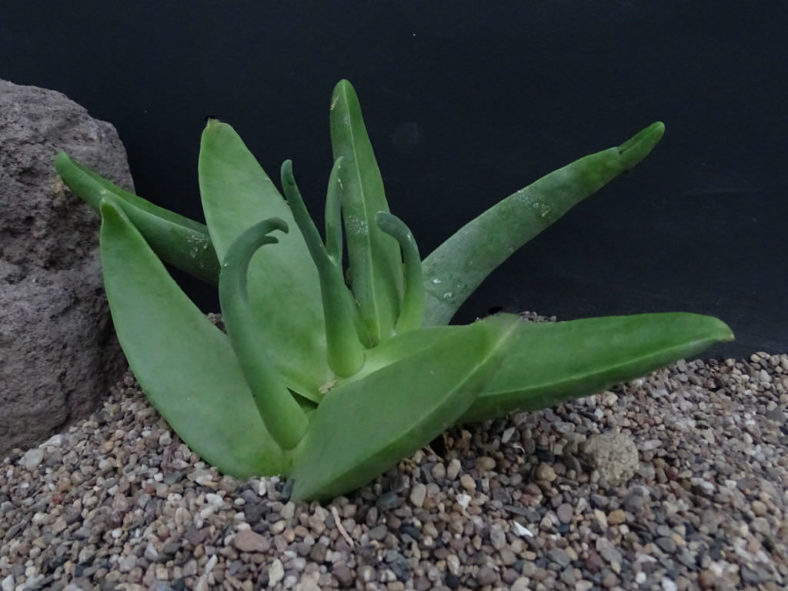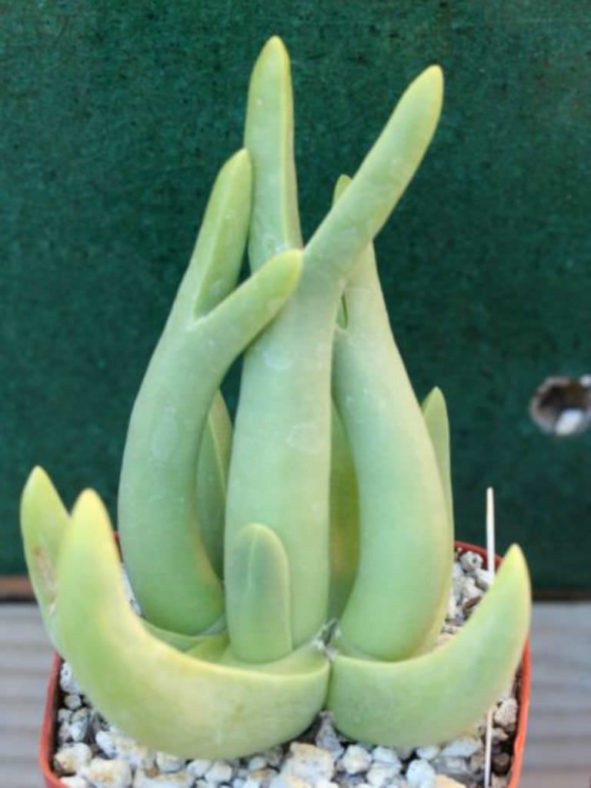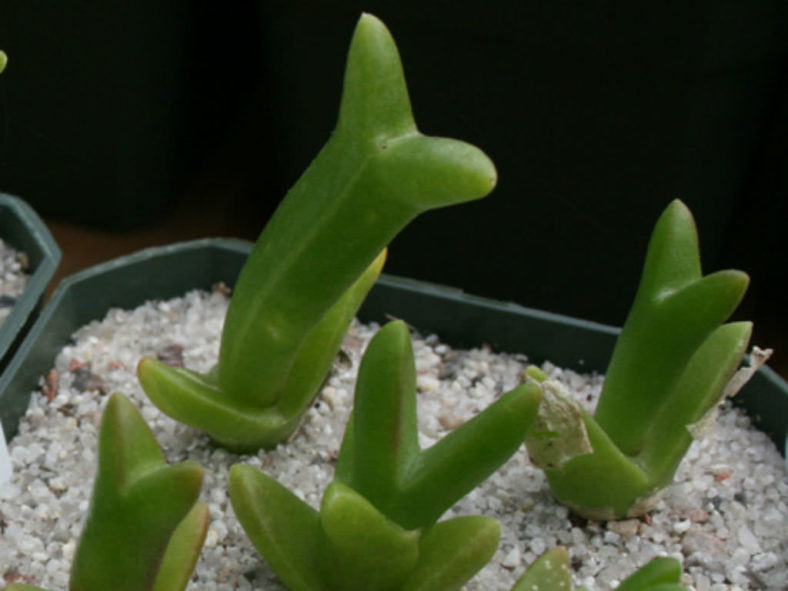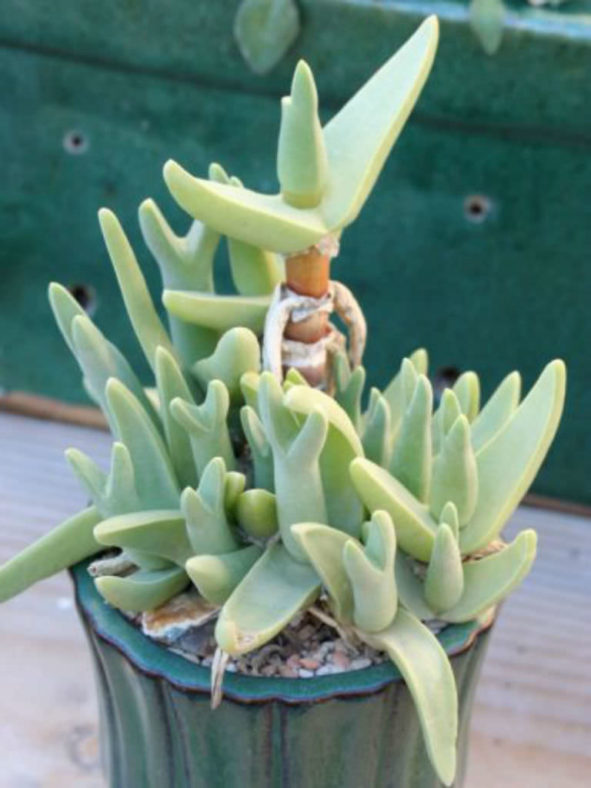Scientific Name
Mitrophyllum grande N.E. Br.
Synonym(s)
Conophyllum grande, Mitrophyllum brevisepalum, Mitrophyllum carterianum, Mitrophyllum latibracteatum
Scientific Classification
Family: Aizoaceae
Genus: Mitrophyllum
Etymology
The specific epithet "grande" (pronounced "GRAN-dee") means "full-grown, grown up; large, great, grand, lofty, big" and refers to the considerably larger size of the leaf pairs of this species compared with the other members of the genus.
Origin
Mitrophyllum grande is native to South Africa. It occurs on south- to southeast-facing slopes with quartzitic stones around Brakfontein in KwaZulu-Natal and north of the Oograbies Mountains in the Northern Cape province.
Description
Mitrophyllum grande is a small, sparingly branched succulent shrub with short branches and pairs of fleshy, fused leaves. During the growing season, it develops two leaf pairs that alternate between distinct growth types. The free part of the first pair of leaves is tongue-shaped to triangular, measuring up to 4.8 inches (12 cm) long and 1.2 inches (3 cm) wide. The leaves of the second pair are fused for 4/5, forming an oval body that can reach up to 4 inches (10 cm) in length and 1.4 inches (3.5 cm) in diameter. The leaves dry during the dormancy, eventually becoming a papery sheath in which the new leaf pairs form.
The flowers are solitary, with yellow or white petals, and appear between the free part of the second pair of leaves from mid-fall to mid-winter. The fruits are five-angled capsules with covering membranes that extend about 1/3 of the way over the locules.

How to Grow and Care for Mitrophyllum grande
Hardiness: USDA hardiness zones 10b to 11b: from 35°F (1.7°C) to 50°F (10°C).
Mesembs are primarily adapted to relatively predictable rainfall patterns rather than extreme drought and irregular rainfall. Total rainfall may be extremely low, but water is available at least seasonally or through fog and condensation. This results in plants that are not especially large, sometimes very small, and affects how they should be treated in cultivation.
The basics of care are simple: free-draining soil, plenty of sun and ventilation, and regular light watering in the right season. After that, the difficulties are endless, trying to adapt to the Mesembs' adaptability and follow their growth habits in your particular conditions.
These plants require a loam-based compost with extra drainage material such as horticultural grit or perlite. They all like good light conditions and plenty of ventilation.
Some are relatively cold-hardy and can even survive mild winters outside. Most will survive temperatures down to the freezing point. Some Mesembs begin to grow in the fall as temperatures drop and days get shorter.
Learn more in "How to Grow and Care for Mesembs."
Links
- Back to genus Mitrophyllum
- Succupedia: Browse succulents by Scientific Name, Common Name, Genus, Family, USDA Hardiness Zone, Origin, or cacti by Genus
Photo Gallery
Click on a photo to see a larger version.


